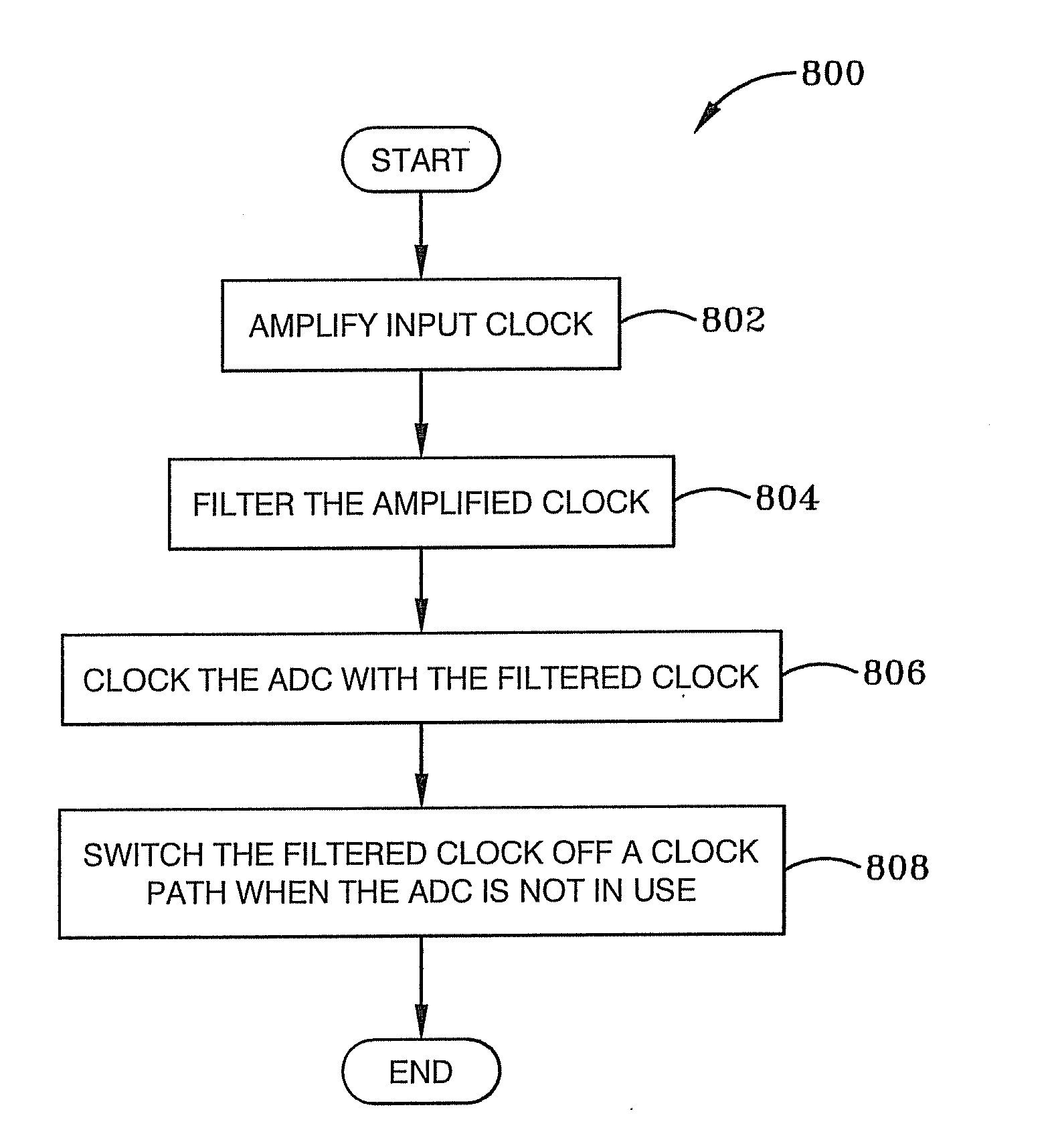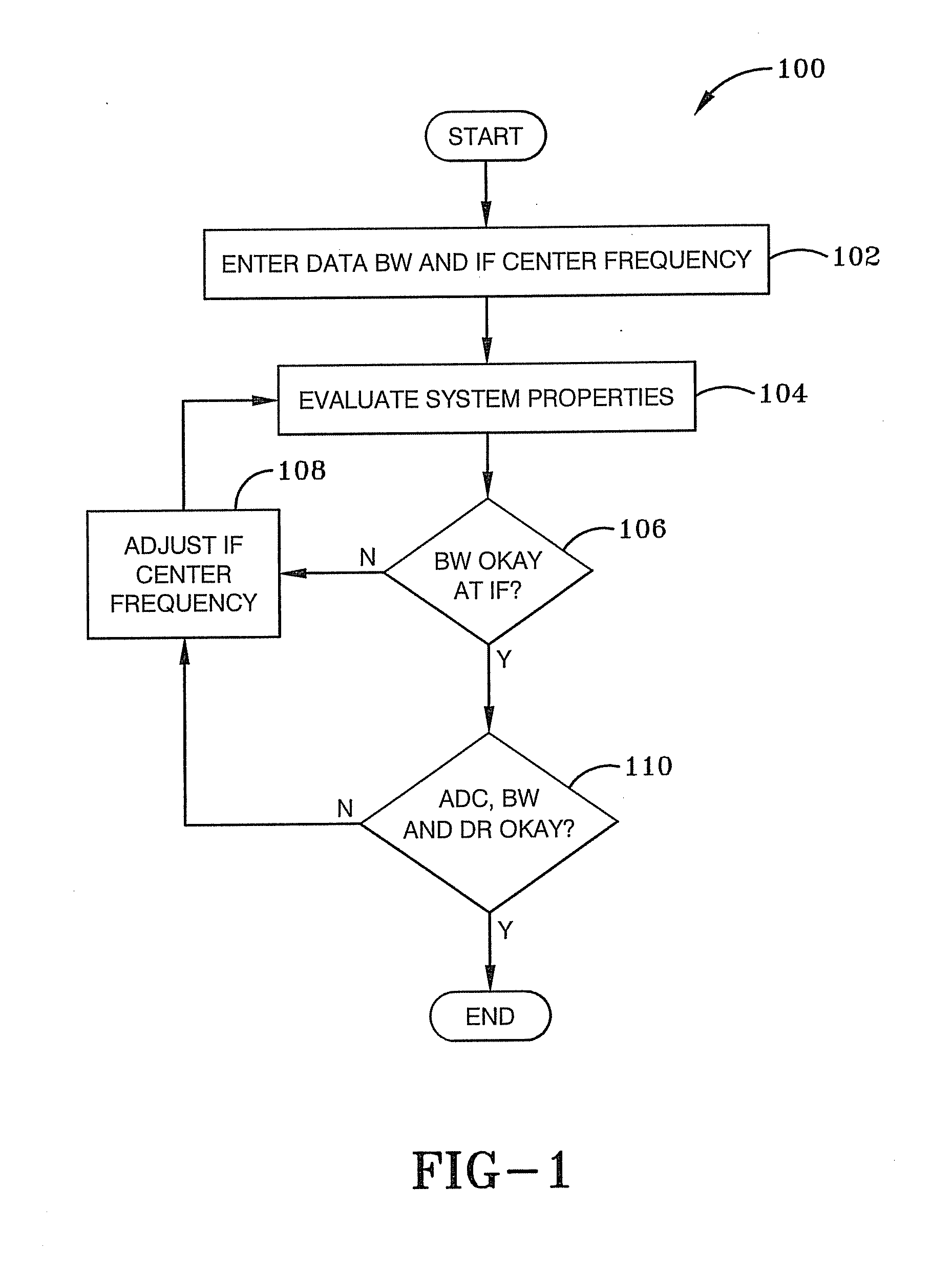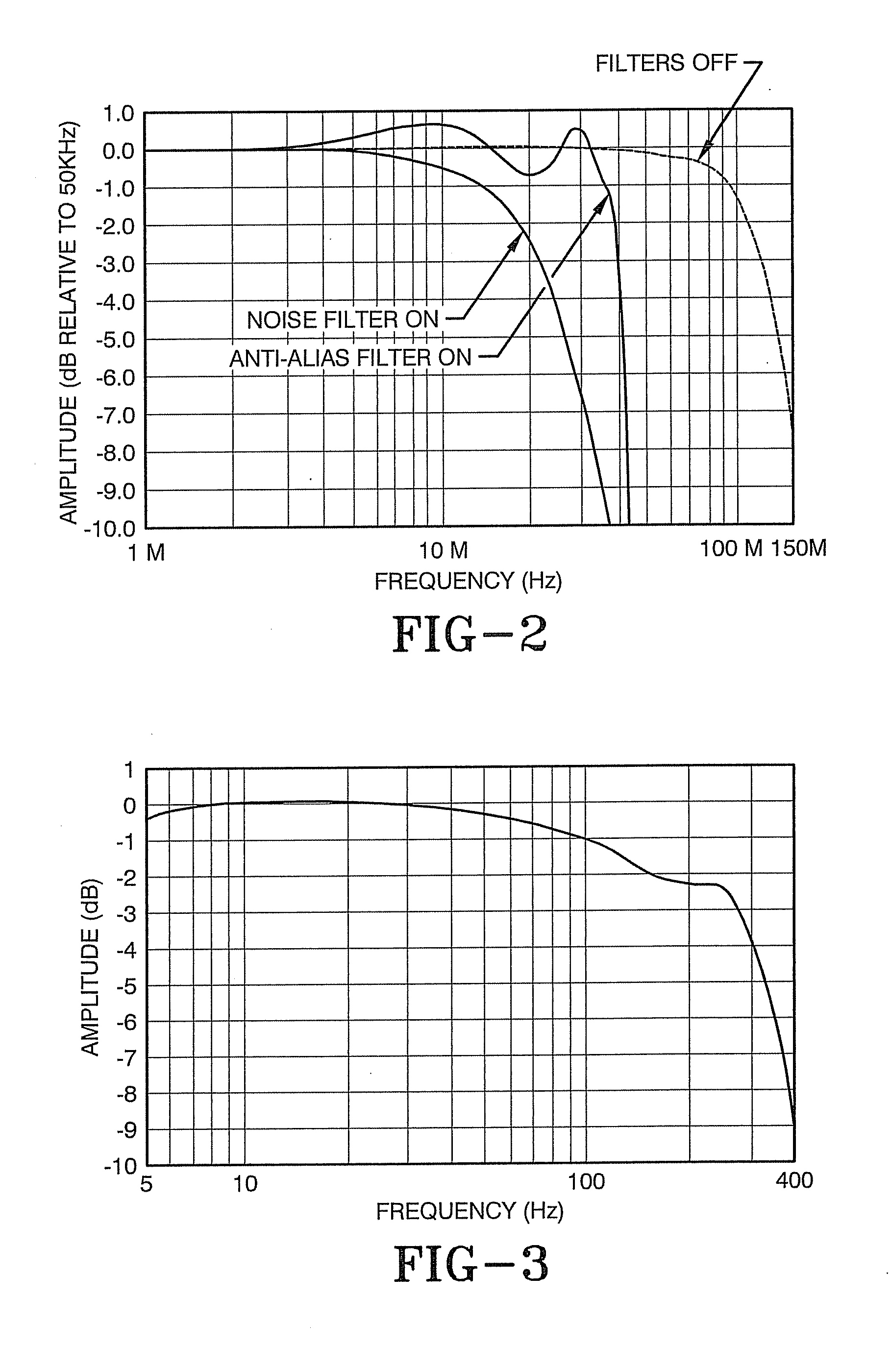Proper frequency planning in a synthetic instrument RF system
a synthetic instrument and frequency planning technology, applied in the field of synthetic instrument clocks, can solve the problems of difficult to meet the goal, high frequency gain was either not available or very expensive, etc., and achieve the effect of improving the noise floor and dynamic range of the synthetic instrument system, improving the noise floor, and improving the noise floor
- Summary
- Abstract
- Description
- Claims
- Application Information
AI Technical Summary
Benefits of technology
Problems solved by technology
Method used
Image
Examples
first embodiment
[0030]FIG. 1 illustrates a method 100 used to plan the intermediate frequency (RF) and the bandwidth of and analog-to-digital converter (ADC). For purposes of simplicity of explanation, FIG. 1 and the other illustrated methodologies of other figures are shown and described as a series of blocks. It is to be appreciated that the methodologies are not limited by the order of the blocks, as some blocks can occur in different orders and / or concurrently with other blocks from that shown and described. Moreover, less than all the illustrated blocks may be required to implement an example methodology. Blocks may be combined or separated into multiple components. Furthermore, additional and / or alternative methodologies can employ additional, not illustrated blocks.
[0031]FIG. 1 illustrates the interaction between the IF bandwidth, IF center frequency, and the interaction of the ADC sampling clock selection. The process converges once the input signal bandwidth properties are well defined. A ...
second embodiment
[0052]FIG. 9 illustrates a second embodiment method 900 for frequency planning a synthetic instrument unit. The method 900 begins by selecting an intermediate frequency (IF) that is carrying input data, at 902. The frequency is selected based on the architecture of synthetic instrumentation units such as receivers, filters, antennas, mixers and other components as understood by those of ordinary skill in the art. Selecting the IF can be an iterative process that is successful when the system bandwidth, the dynamic range (DR), sampling clock of an ADC and other features of the SI are radically synchronized.
[0053]A system bandwidth (BW) of the synthetic instrument unit is determined at 904. Next, a determination is made to determine if the system bandwidth (BW) is above a first tolerance, at 906. The IF is adjusted, at 908, when the system BW is not above the first tolerance to produce an updated IF. When the system BW is above the first tolerance, the method 900 selects an analog-to-...
third embodiment
[0054]In other configurations of the third embodiment, an amplifier is selected that is capable of amplifying the ADC sampling clock prior to filtering the ADC sampling clock. An ADC can also be selected based on the IF where the ADC can be used to filter the input data based on the ADC sampling clock frequency. The IF and the ADC sampling clock can be selected so that the IF has a frequency that is about four times greater than the ADC sampling clock frequency.
[0055]In addition to determining if the BW is satisfactory, at 906, the method 900 can also determine if a BW of the ADC is satisfactory. If the system BW is not satisfactory, then the IF is adjusted to produce an updated IF. The determining if the BW of the ADC is within a BW window is performed after selecting an intermediate IF. The method 900 can also determine if the dynamic range (DR) of the input data is satisfactory. The IF is adjusted when the DR is not within the DR window to produce an updated IF.
[0056]In summary, ...
PUM
 Login to View More
Login to View More Abstract
Description
Claims
Application Information
 Login to View More
Login to View More - R&D
- Intellectual Property
- Life Sciences
- Materials
- Tech Scout
- Unparalleled Data Quality
- Higher Quality Content
- 60% Fewer Hallucinations
Browse by: Latest US Patents, China's latest patents, Technical Efficacy Thesaurus, Application Domain, Technology Topic, Popular Technical Reports.
© 2025 PatSnap. All rights reserved.Legal|Privacy policy|Modern Slavery Act Transparency Statement|Sitemap|About US| Contact US: help@patsnap.com



